
16 minute read
COMPLETE MIGRATION SERVICES
from 2012-06 Sydney (1)
by Indian Link
WORK, STUDY, LIVE IN AUSTRALIA!!! REGISTERED MIGRATION AGENT
For all your Migration and Australian Visa related queries call now at0433 986 780
Our services include:
• Advice on Migration pathways i) General Skilled Migration ii) Student Visas iii) State Sponsored Visas i v) Business Migration v) Partner and Family Migration
• Visa assessment (Eligibility assessment)
• Complete preparation of visa application
• Guidance on study options and facilitate Student Visa procedures
• Review procedures in Australia
CONTACT:
Sonal Agrawal
MARN- 1169617
Level 2, Suite 8A, 48 Macquarie Street
Parramatta, Australia 2150
MOB 0433 986 780 PH 02 8677 5161
Email: sonalagrawal0@gmail.com
Syed Mohiuddin 0421119628 syed@completemigrationservices.com.au contactus@completemigrationservices.com.au
For quick visa assessment ll the online visa assessment form on www.completemigrationservices.com.au
We help you achieve a better life and pursue your dreams.
In Rajya Sabha, Tendulkar to help other sports too Cricket legend Sachin Tendulkar, who took oath as a Rajya Sabha member recently, vowed to help other sports as well and said he would be liked to remembered as one who contributed to the country and not just cricket statistics.
Speaking after taking oath as a nominated member, Tendulkar told reporters that he might face obstacles but hoped to carry on with help from fellow parliamentarians.
He and his wife Anjali met Minister of State for Parliamentary Affairs Rajeev Shukla in the chamber of Rajya Sabha chairman Hamid Ansari.
“In the last 22 years of my international career, cricket has given me so much. I also wanted to give something back to cricket in the latter half of my life,” Tendulkar said.
“Today with the nomination, I am in a better position not only to help cricket but also other sports. It means a lot to me.
“I believe there will be a few obstacles along the way, and I will need (help) from my fellow parliamentarians, the administrators, media and our countrymen. Together we can make a lot of changes,” he added.
The batting maestro said he would like to be remembered as somebody who contributed to all sports in India “rather than just cricket statistics. That would be fantastic”.
Asked if he will find enough time for parliament, Tendulkar made it clear that his first priority would be cricket.
“I did not go to anyone asking to be a Rajya Sabha member. It’s an honour and I accept that with respect.
“But I am here because of my cricket.
I can’t take my focus away from cricket because that is where it all started for me.”
Tendulkar also said that he will focus on his game, and as and when he gets time he would contribute not just for cricket but for other sports as well.
“At this moment my focus will be on cricket, and as and when, there is time in between, I will look at other things, and see how I can help and bring in whatever changes.... not only cricket but all other sports.”
Economic woes are largely due to domestic factors: FICCI
The government should not blame the eurozone crisis for the present economic slowdown as it is largely due to the domestic factors like excessive monetary tightening, lack of reforms and delay in project clearances, a top industry lobby said in New Delhi recently.
“The current economic problems are largely a result of domestic factors like excessive monetary tightening, delays and uncertainty over key economic legislations,” said R.V. Kanoria, president of Federation of Indian Chambers of Commerce and Industry (FICCI).
Kanoria said project delays on account of factors, including stalled environmental clearances, problems in land acquisition, prolonged pause in reforms and an atmosphere of unwillingness in decisionmaking in bureaucracy, have also led to the slowdown in industrial growth.
As per data released by the Central Statistics Office, India’s economic growth slumped to a nine-year low of 5.3 percent in the fourth quarter of fiscal 2011-12.
The country’s gross domestic product expanded by 6.5 percent in 2011-12, which is even lower than the 6.7 percent level achieved during the global financial crisis of 2008-09.
Top economic policy makers, including Finance Minister Pranab Mukherjee, have blamed the eurozone crisis for the current economic woes.
However, Kanoria said that the current economic slowdown was largely due to domestic factors and urged the government and the opposition parties to act together to overcome the crisis.
“There has to be clear recognition on the part of ruling and opposition parties that we are in crisis situation and all parties need to stand united and strengthen the hands of policy makers to take bold decisions and act decisively,” Kanoria said at a media interaction in the capital.
FICCI president suggested a 12-point action programme to address the present economic crisis situation.
To bring fiscal discipline, the industry lobby suggested that the “government should eschew the temptations of a premature welfare state and announce an immediate moratorium on any additional expenses on doles”.
FICCI called for 200 basis points or two percent cut in interest rates and 100 basis points or one percent cut in cash reserve ratio by the central bank to ease liquidity situation.
Other suggestions include expediting implementation of the goods and services tax (GST), fiscal stimulus for investments through accelerated depreciation, investment allowance, scrapping minimum alternate tax (MAT) for infrastructure, foreign direct investment (FDI) policy reforms in areas like civil aviation, multi-brand retail, decontrolling diesel prices, and reforms in mining and coal sector by fostering greater competition.
FICCI also called for strengthening framework for raising funds for infrastructure, productivity increase and agriculture marketing reforms for food security, fast track implementation of critical polices and projects, and addressing the issue of repatriation of black money to immediately mitigate balance of payment situation.
Kashmiri youth seek demilitarisation, more dialogue
Kashmiris want autonomy, better economic opportunities and removal of “overbearing presence of armed forces from their state”, a gathering of Kashmiri youth, activists and separatists said during an interaction in Srinagar with young people from New Delhi.
Setting the stage for the discussion, students from Kashmir University and young professionals asked for the removal of the armed forces and “a commitment for dialogue” to secure their democratic rights.
“Laws such as the Armed Forces Special Powers Act (AFSPA) need to go. The militarised zone is meant to suppress Kashmiri people, not to secure the borders,” said Saba Khan, a human rights activist.
“We would like to see a clear road map towards demilitarisation and ensuring basic democratic rights for the youth of Kashmir,” she said.
“What security forces are securing is my sense of insecurity,” she added.
Also present at the discussion was Jammu and Kashmir Liberation Front leader Yasin
Malik. He said the present generation of Kashmiris were conflict-borne children and were frustrated with the government. “And apart from political problem, it is a human problem.”
Criticising the killing of Kashmiri youth during the 2010 protests, Malik said: “The people’s movement turned into a non-violent movement in 2008 but even that has not been appreciated.”
“In the land of Mahatma, I could not find the soul of Gandhi,” he said.
The interaction was organised by the Centre for Policy Analysis, an organisation working in Kashmir. With AFSPA providing security forces immunity from prosecution, the participants spoke about incidents where the soldiers misused their immunity and harassed Kashmiri people.
“The lull in the valley you see at the moment is not peace,” said participant Faisal Qadri.
“Here, we are governed by a man who does not necessarily hold a matriculation certificate but has a gun,” he said.
He also said that youngsters who took part in stone pelting in 2010 were not drug addicts or paid by politicians.
“They were not terrorists. They were just suppressed youth who wanted to have the freedom to fulfill their aspirations.”
“Kashmiris have political aspirations as well as economic grievances. They have been persecuted both by New Delhi and our leaders,” said participant Junaid Matoo.
“Kashmiris want freedom to live a life of dignity which New Delhi has denied us. At present, the right to dissent, which should be our democratic right, is denied to us and our leaders have failed to institutionalise it,” he said.
Hamida Naeem, a teacher from Kashmir University, said that the consensus in the valley was not to be a part of India. Others too gave similar views.
“It is sad that the problems of Kashmir are never highlighted in the country’s media,” said editor of newspaper Rising Kashmir Shujat Bukhari.
Later, on queries of the Kashmiri participants, the visitors, who were students of Jawaharlal Nehru University, Delhi University and Jamia Millia Islamia and young professionals, said the focus should be on dialogue and creating common ground.
“Dialogue is very important. Conflict can never be an answer to political questions,” said lawyer Bajinder Singh.
The fight of other oppressed people across the country against social and economic inequalities can be a common ground for our friends from Kashmir,” said Jawaharlal Nehru University student Arjun.
“We need to create joint action and to put public pressure on the country’s political powers to address the violations of human rights and democratic rights in the valley,” he said.
The visitors agreed on the formation of a youth coordination committee to address issues such as demilitarisation, withdrawal of AFSPA, investigation into fake encounters, resumption of dialogue, restoration of the right to dissent, re-compensation for forced labour and environmental exploitation.
A battle won for girls’ education in male bastion
It has been a tough battle for Faiza Nisar Ali who helped steer the entry of girls into the erstwhile male bastion of the historic AngloArabic School.
Muslim women created history when the school admitted girls for the first time in its over 300-year-old existence.
Faiza’s fight began in March when she was appointed to prepare a feasibility report on why Muslim boys and girls should study under the same roof.
She had to contend with numerous pitfalls along the way, including frantic phone calls from community hardliners trying to dissuade her, being blamed for scripting something “un-Islamic”, countless sleepless nights and also the trauma of a miscarriage.
“After months of research, consultations with educationists, psychologists and parents, I concluded in my report that co-education among Muslims would result in greater progress and help them in the later stages of life,” said Faiza, who is in her thirties and is the business studies teacher at the same school for over six years.
She recounted the events with moist eyes.
“After the report was done, the staff became very resistant. The teachers went against me and I was held liable for being un-Islamic,” she said.
The report spoke on how co-education could boost academic performance of both the sexes, a feasibility into the structure of the Anglo-Arabic school and its importance and it also highlighted that Muslim parents wanted their girls to go to a co-ed institution.
Despite facing internal resistance from the predominantly male school staff, the managing committee of the school in a meeting on March 26 decided to open its doors to girls.
The decision was considered historic for the school, located at Ajmeri Gate, in the old quarters of Delhi.
However, the landmark decision did not end Faiza’s agony.
While her family was supportive about the step she had taken, the mental pressure due to the angry reactions brought her to hospital.
Then eight weeks pregnant, Faiza went through a miscarriage. But she was gutsy enough to pursue her dream.
“I had this invisible pressure about how to face colleagues in the school. I had gone through a lot, but I did not want to leave it in the middle,” the mother of a five-year old admits, adding that her “mother had even suggested her to distance herself from all the activities”.
Her cause got a stronger voice when more Muslim women joined the cause. A
Alvi, filed a petition in the Delhi High Court. On May 24, the court backed their cause. The school management swung into action and has so far admitted over 30 girls in Classes 6 to 11.
For many Muslim girls studying in nearby girls’ government schools, the move is a dream come true as they can switch to the Anglo-Arabic School that has produced the likes of Liaqat Ali Khan, the first prime minister of Pakistan, Sir Syed Ahmad Khan, founder of Aligarh Muslim University, J.N. Dixit, former national security adviser and foreign secretary.
Burqa-clad petite Darakshna Fatima, 17, beams with joy for having made it to the school.
“I lost my father 6 years back, since then my mother has been the pillar of strength for me,” said Darakshna, who aspires to become a chartered accountant.
The Class 11 student added, “Our relatives had reservations, but I am proud that my mother fought for my education.”
Darakshna’s sister Gulafshan has also secured admission to the school that started off as Madrasa Ghaziuddin around 1692. While the school management says the facilities for girls, such as girls’ common room and separate toilets, will be strengthened, the first target for the coming 32 girls is ‘equality’.
Jamia Millia Islamia Vice Chancellor Najeeb Jung, president of Delhi Education Society, under the aegis of which the school runs, recently felicitated the first batch of 15 girl students who were admitted to the Anglo-Arabic School.
“This is the girls’ first step towards better schooling. The change will come gradually. .. Modern education has started arriving for girls from the community,” Jung said.
“We are expecting more girl students in the coming days. There will be a female teacher to attend to the special needs of girls and we plan to recruit more female staff,” said Azra Razzak at Jamia Millia Islamia, who is also secretary, Delhi Education Society.
However, Faiza says the fight is not over yet. Though girls have been admitted, the resistance among many staff members remains.
“Let’s hope there is an attitudinal shift and changes begin to happen,” Faiza said.
She had faced resistance when she was selected among three women teachers to join the 80-member strong male staff at Anglo-Arabic School. She remembers facing
“Initially it was very suffocating, gradually came better understanding,” Faiza recounted, and hopes attitudes will change for the girl students too.
Australia’s largest beef producer to employ Indian workers
Anticipating hardships in finding skilled workers onshore, the largest beef producer of the continent, Australia Agriculture Co (AAco), may recruit hundreds of Indian workers for its new abattoir in the country’s north.
“India will be key, but of course we have a relationship with IFFCO which kills about 3.5 million buffaloes a year. So we have a bit of access to the skills there,” AAco chief executive David Farley told The Australian Financial Review
The statement is taken as an indication that there would be some recruitment from Malaysia too as IFFCO, the major shareholder of AAco, is based there.
The company is expecting trade unions to create hassles for the new project planned to be established at Darwin in Northern Territory.
“If we go into this project with fear of unions and industrial problems, then I shouldn’t be starting this project,” Farley said.
“We want to run a safe, fair and equitable plant that offers long-term employment opportunities for people. Therefore we need a productive workforce. If we go into this project with that philosophy, we will be there for a long time,” Farley said.
AAco has been involved in stoushes with trade unions in the past. Its chairman, Donald McGauchie, also played a significant role in the national waterfront dispute two decades ago.
The trade unions have already started expressing concerns about the Darwin abattoir project and the AAco plans to bring in workers from India.
“Obviously we want businesses to open but there has got to be a process in place whereby the first step is not to go overseas,” Unions NT president Heinz Schmitt said, commenting on AAco’s plans about the Indian workers.
The new meat processing facility would need 260 workers to operate the A$80 million plant. Most beef products would be exported to the US, South Korea and Indonesia.
Besides India, AAco may also get workers shareholder IFFCO is based) and Indonesia. AAco has previous experience in flying in workers directly from overseas.
“We’ve had great experience recently in running our feedlots with staff out of the Philippines. In Darwin, we tend to run a programme bringing in Indonesian slaughtermen on a training programme.
“Through one of AAco’s major shareholders, (we) have access to good meatworks staff out of India,” Farley had told shareholders at a conference earlier.
“We can fly staff direct into Darwin from Mumbai or Delhi for $618,” he said.
“We’re looking at skilling, from an international as well as a domestic perspective,” he had added.
Although most of the developed countries are experiencing recession, Australian employers are struggling to find skilled workers due to a China- and India- driven resources boom.
As most Australian and foreign skilled workers are making a beeline to the mining sector, manufacturers are facing a tough time finding workers ready to work on comparative low wages.
The mining boom has created an unlikely skills shortage in Australia, thus playing a significant role in the closure of many large manufacturing and servicing plants.
If AAco gets a nod from the Australian Immigration Department, the Indian workers are likely to be imported on subclass 457 visas.
IANS
$$$ Six Figure Sales Opportunity
Healthmax are the sole Australian agents of an international cookware company enjoying major success overseas.
Voted ‘World’s Best Cookware’ at About.com Readers Choice Awards 2011 & 2012, these Þrst class products are presented and sold by in-home demonstration in 40+ countries. Several million sets have been sold since 1946. We are seeking resourceful, motivated individuals, preferably with (direct) sales experience, to market the product in the Indian community.
Training, equipment and ongoing support will be provided. A six Þgure performance based income is achievable for the right applicants.
We invite individuals with suitable ability and experience to forward their resume’ to: ben@healthmax.com.au or phone 0432 250 400
By USHA RAMANUJAM ARVIND
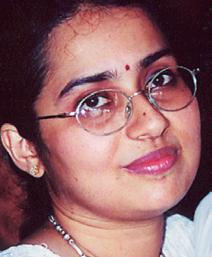
As the sun goes down and the temperature plummets, the iconic Sydney skyline lights up with an inspired display of sheer creative genius, creating an interactive nocturnal playground.
During the waning weeks of May, thousands turn up at various foreshore destinations for a sumptuous spread of ideas and creativity. In its fourth year, Vivid Sydney, the hugely popular son et lumiere show, is not only ‘the biggest ideas festival in the southern hemisphere’, but also voted among top ten worldwide.
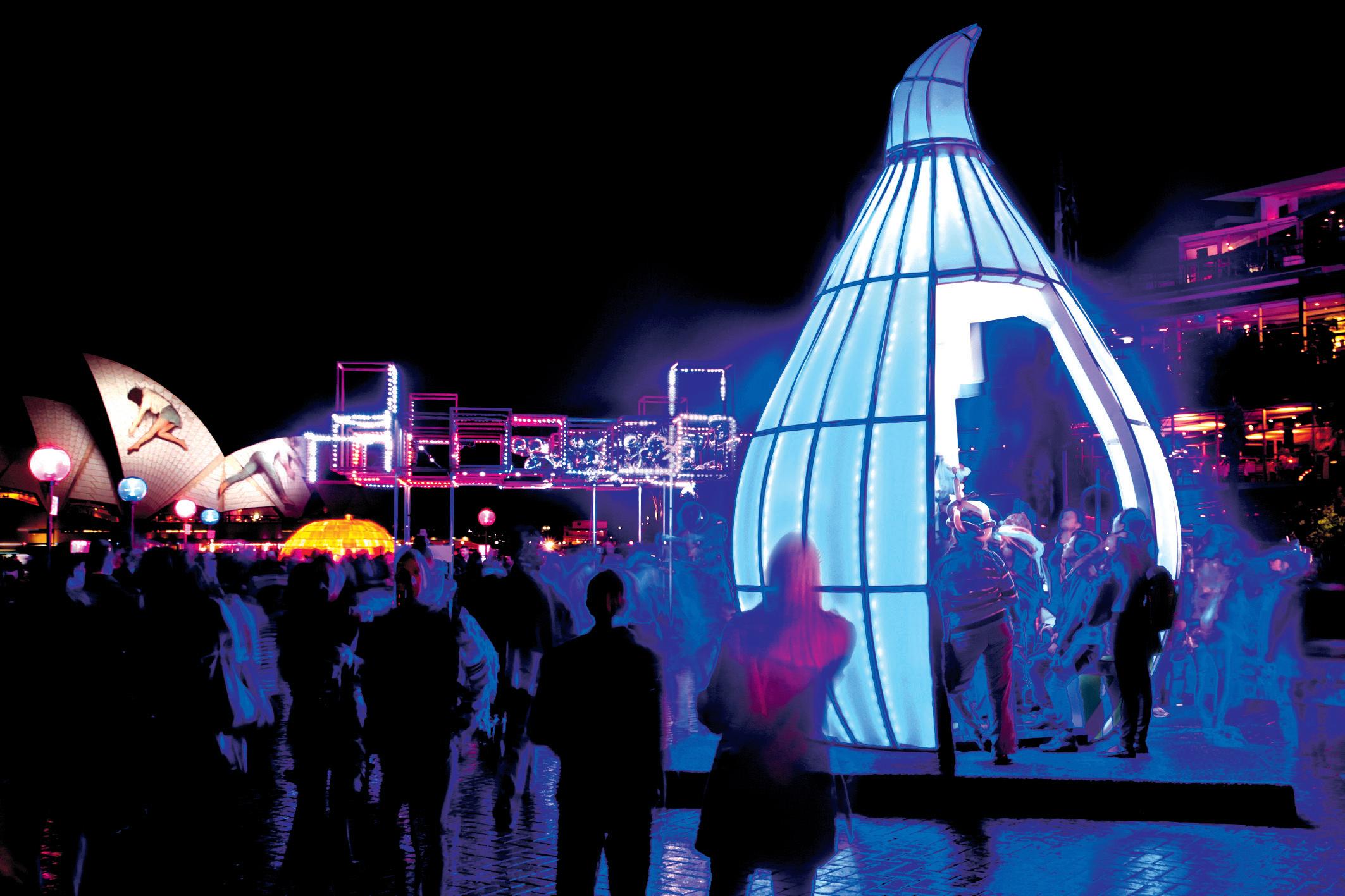
The 2012 edition which concludes on June 11, is particularly special to visitors of South Asian backgrounds. An Indian Australian has been recognised for the first time, for his significant contribution to the winter festival.
Akil Lau, a talented architect and acoustics engineer who works for construction services company Aurecon, has created the sound effects for the Water Droplet, a 1.5 tonne installation at Campbell Cove.
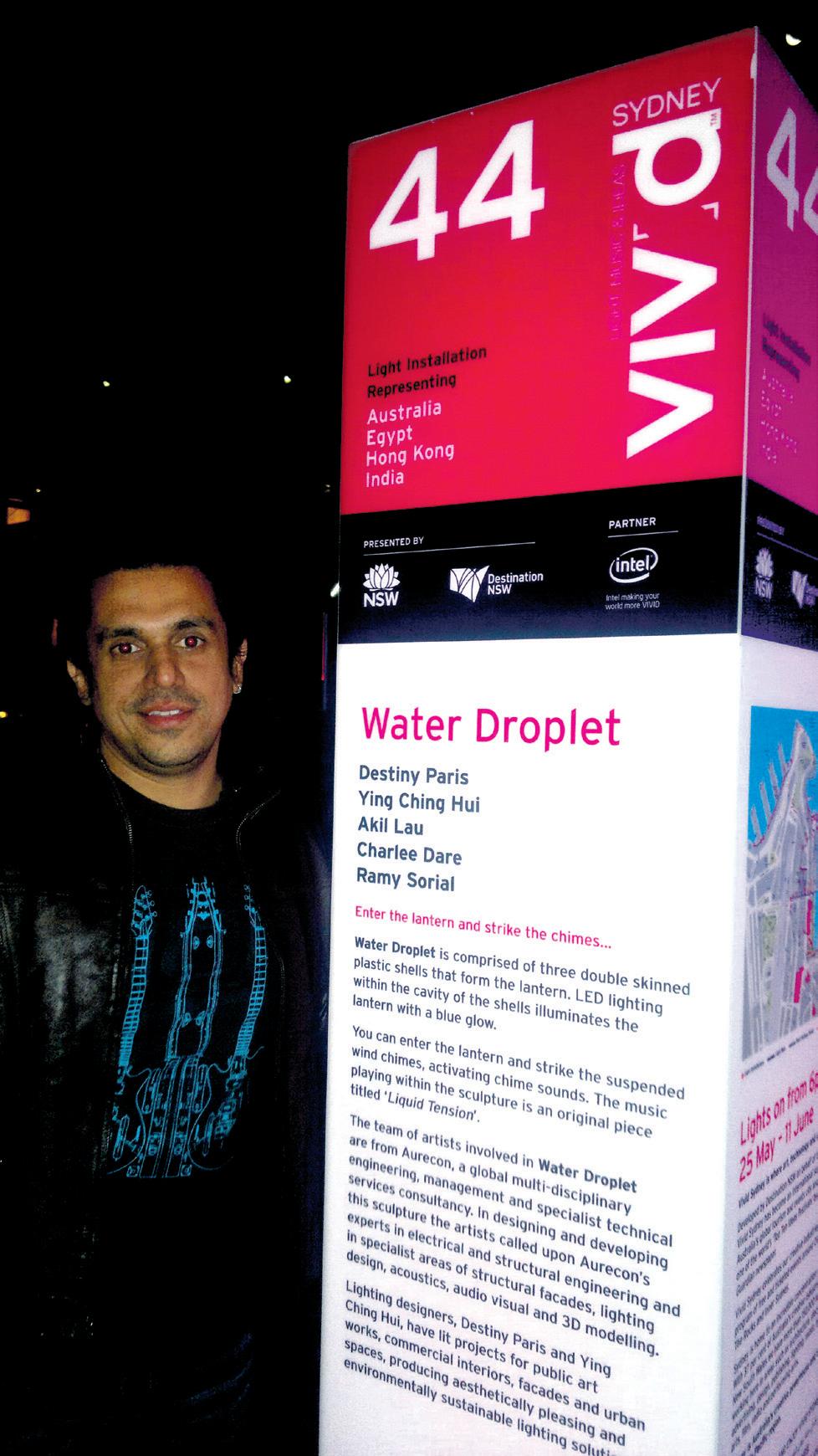
“Very rarely do we get a chance to represent our country of birth on such a large scale. Getting to do that in such a beautiful city, which is a favourite with many Indians, was priceless,” Lau told Indian Link. “Seeing the reaction of visitors and overhearing an Indian couple scream, ‘Ispe water theme fitted in well with the waterscape that the festival walk weaves its way around, and the incorporation of sound had appeal for the judges.”
The creative team included electrical engineers Ying Ching Hui, Zac Dalleh and Brendan Fernandes, ICT consultant Charlee Dare, specialist façade engineer Ramy Sorial and REVIT modeller Barry Fauvel, besides Lau.
Lau, who holds a double Masters in Industrial Design and Audio & Acoustics from New Delhi and Sydney respectively, has composed the audio piece dubbed Liquid Tension, which was incorporated into the sculpture.
“Bringing each installation to life is possible only as a team effort from a wide variety of professionals like lighting professionals, sound engineers, designers, architects, music composers, dance directors, theatre artists, etc. I was proud to be a part of such a talented team and will remember this as an event which gave my talents a platform, but more importantly allowed me to represent India in such a global event,” stated Lau.
Interestingly, the young Punjabi’s involvement in this prestigious project was the outcome of a chance lunchtime discussion. Noting his creative inputs, he was roped into the project.
“Water Droplet is an experience for the two major senses, visual and aural. The blue light, known to calm the senses, aids the intent of the sound design. Since ages, the sound of water has been known to create a calming effect on the human mind. The combined effect creates a state
A talented architect’s contribution to Vivid Sydney results in a wondrous blend of sound and light with Indian overtones


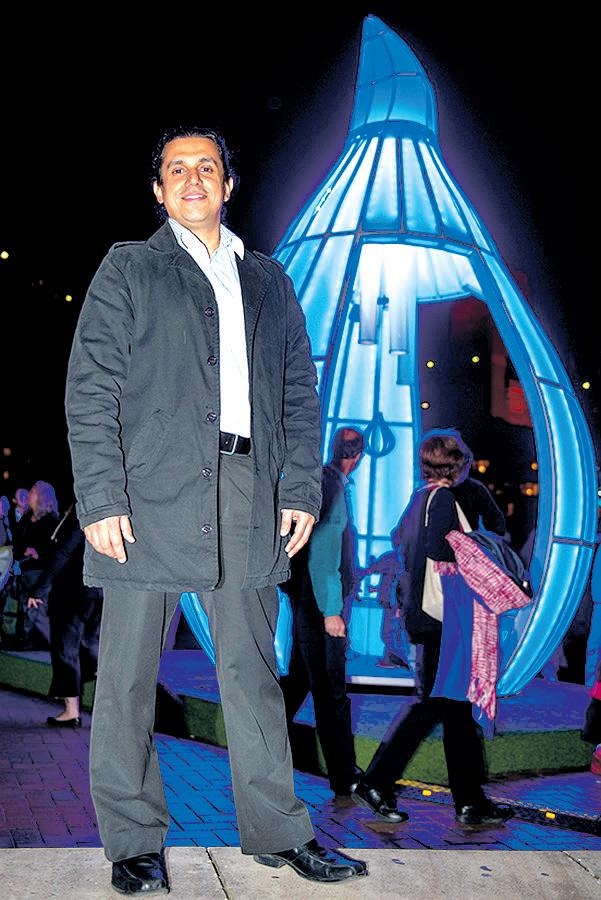
India ka naam hai!’, was the best compliment I ever received”.
“It is a thing of utmost pride for us, and we would love to share this moment with every proud Indian in Sydney and the rest of Australia,” Mahi Lau, Akil’s wife who is also an architect, added excitedly.
The project which was six months in the making, is the brainchild of Aurecon’s lighting designer Destiny Paris.
An Aurecon media release noted that the Water Droplet “was a desirable contender, as the of mind which can be likened to a trance, when experienced at the optimum surroundings,” explained Lau.

“The storyline behind the 5-7 min long audio composition is that of a single water drop sound which starts off with random thunder. The water drop slowly catches momentum thus producing a rhythmic beat. Slowly the beats from the falling water drops, turn into a musical composition. After achieving a crescendo one can hear the dissolution of the composition back into the sound of flowing water,” he added.

“The story symbolically depicts the ever-familiar human life pattern which starts randomly, slowly gets into a rhythm and finally dissolves into eternity, becoming one with the universe,” he concluded.
Elaborating on the technical aspects Lau indicated that the five chimes of different lengths hanging from the middle of the installation were fitted with sensors which were triggered with slight movement of the chimes. Each trigger on the chime was linked to a separate chime sound. 5 different chimes sounds were created using the sound of a single chime. This was done, simply by changing its pitch (frequency), based on the pentatonic scale (major). Pentatonic scale is a musical scale with five notes per octave in contrast to a heptatonic (seven) scale.
The loudspeakers are connected to a Digital Signal Processor (DSP) and the programming in the DSP was done so that the sound of chimes created an illusion of large space and the sound moving around the space. There were a few other techniques inserted in the DSP, which allowed the background track to reduce (ducking) in levels when the chimes were struck.
Interestingly, all the audio equipment has been stored in a cabinet away from the main structure except for the 3 speakers and an active subwoofer, which is placed inside the seat with holes on the front surface to let the sound out.
Lau believes that a solitary space with minimal encumbrances would have been ideal to bring out the best effects, visually and aurally. Though this might mean a visit to the installation late into the night, he added.

Being part of such a largescale event has been an enriching experience for this music fanatic.
“I think Vivid Sydney brings out the best in the city’s landmarks. With many buildings along the harbour front participating in the festival this time, the look of the city from the Opera House podium is ethereal. It is a moment of truth for the city, which has all the vivid colours in all the residents’ day-to-day lives,” he said.

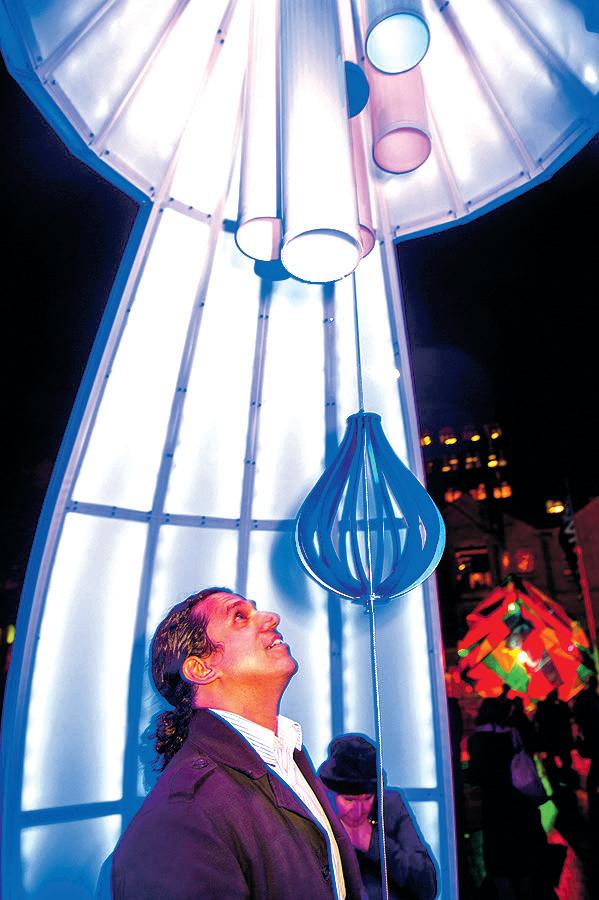
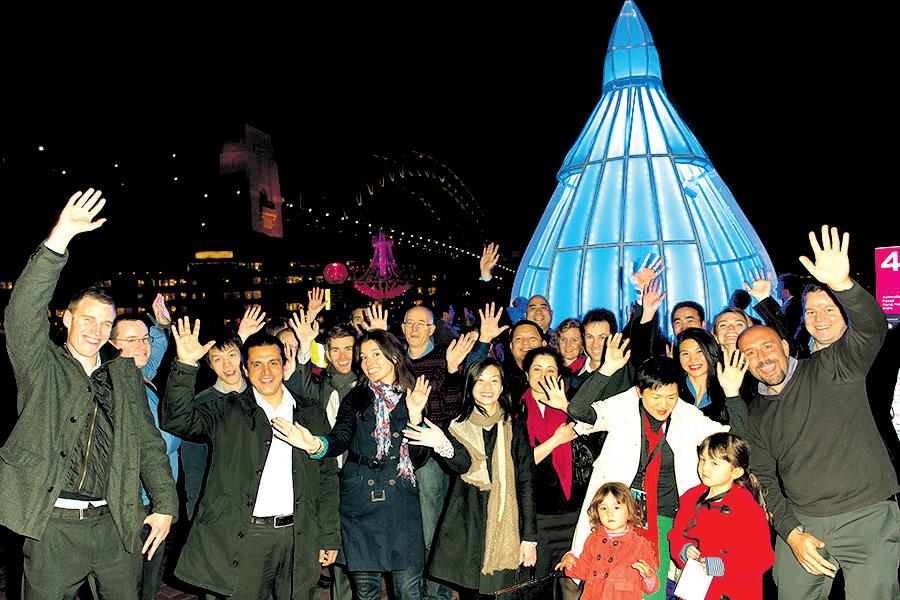

“Music has been an integral part of Akil’s growing years. While studying Architecture his design thesis was based on a School of Music – a school with the optimum spaces creating an environment conducive to learning and enjoying music. Since then, he has had an eventful journey through all aspects of music and sound,” recalled Mahi, who also shares his passion for music (albeit in a different genre).
Akil Lau has successfully blended visual design with acoustics for a perfect amalgam. He has worked on several landmark projects in Sydney including Sheraton Four Points and Telstra.









